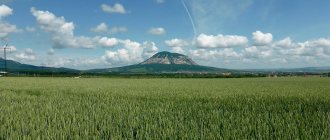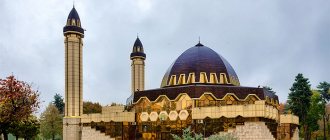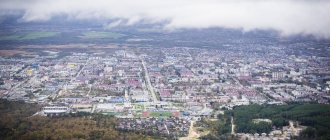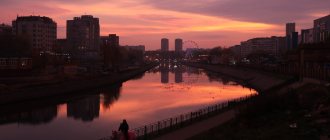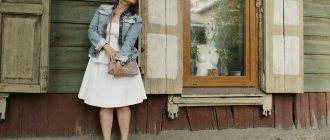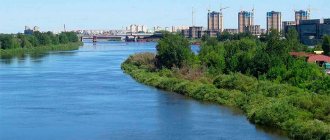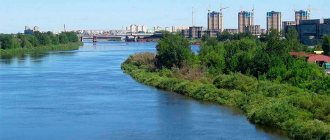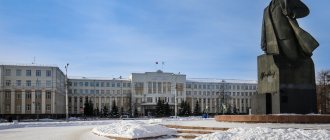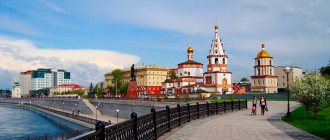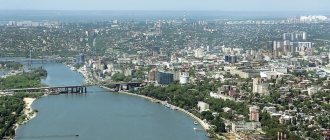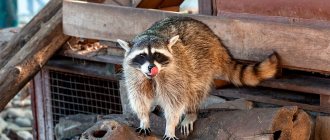- Where to go in Rostov
- Pushkinskaya street
- Embankment of the Don River
- Light and music fountain "Petrovsky"
- Monument "Storm"
- Museum of the North Caucasus Railway
- Rostov Regional Museum of Fine Arts
- theatre square
- Botanical Garden
- Excursions in Rostov-on-Don
- Many faces of Rostov-on-Don
- Eat, drink, walk in Rostov-on-Don!
- Mystical Rostov-on-Don
- Shrines of the Don region
- Unexplored landscapes of the Rostov region
- Where to eat in Rostov-on-Don
- Restaurant "Crayfish and Reptiles"
- Restaurant "Vysoky Bereg"
- Gastro-cafe "Boulevard"
- Restaurant "Grill&Garden"
- Where to go in Rostov with children
An ancient, green, merchant city, beautiful Rostov-on-Don, and in conversation simply Rostov, lies on the banks of the Don River.
The Sea of Azov is only 46 km away. It is also called the “Gateway of the Caucasus”, the southern and Don capital of Russia. The city is bright and colorful with rich culture and history. It is enough to visit it once to fall in love. It was founded in 1749 on the orders of Empress Elizabeth Petrovna. First, a customs office was established for foreign trade, then the fortress of St. Dmitry of Rostov was founded, which was supposed to protect the southern borders of Russia. By the way, during its entire existence it did not fire a single shot. Over time, the fortress began to be called Rostov, later - the city of Rostov and, in the end, so as not to be confused with Rostov in the Yaroslavl region, it acquired its current name.
The advantageous location at the intersection of major trade and sea routes attracted Russian and foreign merchants to the city, and developed trade and economy well. By the end of the 19th century, Rostov had become a large city, about 100 enterprises operated there, a railway was built, and a horse-drawn tram appeared in 1902. Today it is an industrial and cultural center in the south of Russia, home to more than a million people, and its agglomeration in terms of population is among the TOP 10 cities in Russia. Rostov-on-Don is a multinational, southern city and, thanks to this and its merchant past, the people here live hospitable, open and welcoming. There is a lot of beautiful ancient architecture, a large number of parks and gardens, and a pleasant warm climate. It cannot be said that Rostov-on-Don has been spoiled by tourists, but now organized tours here are becoming increasingly popular, especially in light of recent events in the world and with the development of domestic tourism.
Natural attractions
Many interesting locations in the city are tied to the Don River, on which it is located.
Levberdon
The left bank of the Don received such an unusual name among local residents. This is the new embankment of Rostov-on-Don, opened before the 2022 FIFA World Cup.
The recreational area stretches along the water for 10 km. The main area (more than 90%) is occupied by restaurants, night clubs, cafes, baths and recreation centers. This is where the central city beach is located, located just above the Voroshilovsky Bridge.
On the left bank of the Don, the Rostov Arena stadium with 45,000 seats was built for the World Cup, and a small park was laid out nearby. It has a children's playground with a safe rubber surface. For lovers of active recreation, cycling, rollerblading, and skateboarding are available on a special path. The territory has basketball, badminton and volleyball fields, as well as tennis courts.
Green Island
The Don river island has the shape of a triangle. It is called green because of the huge amount of vegetation. Poplar, ash, blackberries and much more grow here. There is a secluded wild beach on the sandy shore, and nearby there are several recreation centers: “Sperm whale”, “Emerald”, “Dream”.
Green Island is considered an anomalous zone by local residents. There are rumors that a flying saucer once landed on it. Allegedly, since then, many people have been lost “in three pines” and wander for a long time in search of the way back due to the fact that time is distorted.
You can get to the island only from April to November via a pontoon bridge, which is dismantled for the winter. Passage through it is free, but travel by car is paid.
Kumzhenskaya Grove
This place is located in the West of the city, where two rivers – the Don and the Dead Donets – connect. The grove is often visited not only by guests, but also by local residents. It is always quiet and calm here, so you can come here to take a break from the bustle and noise of the city.
Kumzhenskaya Grove
A historical memorial was built at Kumzhenskaya Grove in honor of the heroes who died during the Second World War. On May holidays, many people gather here to honor the memory of the soldiers.
Streets and architecture
The most interesting streets with iconic sights of Rostov-on-Don are located in the city center. The historical center flaunts ancient architecture. The beautiful appearance of Rostov-on-Don was formed by trading houses of merchants, classical buildings of museums and city administration, built in the 19th century.
Pushkinskaya street
One of the main streets of Rostov-on-Don stretches for almost 4 km. A relaxing atmosphere is created by walking paths surrounded by greenery, shady alleys, benches, sculptures in the form of balls and a monument to the Russian poet A.S. Pushkin.
Its unusual architectural appearance is given by ancient buildings of the late 19th – early 20th centuries: the apartment building of Vasily Kushnarev, the mansions of Pavel Kramer and Nikolai Paramonov. A small section of Pushkinskaya Street is reserved for a park area, in which there are several cafes, restaurants and shops. During the hot season, fountains gush here.
At the intersection with Nakhichevan Avenue there is a composition “Lyre” with three musical instruments on a low platform from which water gushes. Another such structure with light and sound accompaniment is located near the Don State Public Library.
Bolshaya Sadovaya
The central street of Rostov-on-Don is one of the earliest in the city. Its construction began in the middle of the 19th century. Sadovaya is compared to Nevsky Prospekt in St. Petersburg, and one of the sites with old houses is called the local Broadway.
Monuments of civil architecture are concentrated here, for example, the three-story mansion of Argutinsky-Dolgorukov with Baroque elements: sandriks, attics, frames and stucco.
The building of the former Volzhsko-Kama Bank, built in the Art Nouveau style, is also interesting on Sadovaya Street. The facade is decorated with masks, arches, attics, and stucco. There are huge windows on the second floor, and small balconies made of metal on the third. Today the house houses the Palace of Children and Youth Creativity.
Trading house Gench-Ogluev
The apartment building of the merchant Gench-Ogluev was built in 1883 and became the first “high-rise” in the city. External and internal decoration is predominantly in an eclectic style.
Excluding the attic and basement, the building has 3 floors. The structure ends with a multi-pitched roof with a superstructure, which after the Great Patriotic War was restored in a modified form: the tent on the tower was reduced, the spire was removed and dormer windows were made.
The main facade of the trading house is decorated in the Baroque spirit. The large windows on the ground floor, designed as shop windows, catch your eye. On the second and third floors the openings are rectangular, in some places they are supplemented with sandstones.
There are two entrances to the building: one is made from the facade and has the shape of an arch, and the other is located on a beveled corner - under a two-tier bay window.
City Council building
The house was built in 1899 for a meeting of the local council. During Soviet times, the regional committee of the CPSU worked there, and today the Rostov City Hall is located here.
The building is designed in the spirit of eclecticism with Baroque elements: stucco, masks on the facade with the image of ancient goddesses, capitals with women's faces, caryatids under the balconies.
The City Council building has 4 floors, and above them there are small domes. They were returned to their place during reconstruction. A characteristic feature of the house is the windows of different sizes and shapes: rectangular, round, square.
Only City Hall employees are allowed inside the City Council building - you can only admire it from the outside.
River Station
On the territory of the river station there is a two-story building built in 1977 to serve passengers of cruise ships arriving in Rostov-on-Don. In its shape, it itself resembles a river boat - with galleries and transitional ramps. The terminal is made primarily of concrete and glass.
The complex includes the former 11-story Anchor Hotel, adjacent to the passenger building. As conceived by the authors of the project, it was supposed to resemble a captain's bridge for observing the river. Now its premises are rented out to restaurants, shops and travel agencies.
From Rostov, cruise ships depart to Yeisk, Astrakhan, Samara, Volgograd and Moscow.
Tachanka-Rostovchanka
This huge sculpture is a popular place in Rostov-on-Don. It was installed 44 years ago, the architect P. Ibalakov, as well as sculptors V. Batyai and V. Kosolapov took part in the work. The height of the copper monument is 15 m, so it can be seen even from afar.
Tachanka-Rostovchanka
Many tourists have a tradition of taking a photo with this sculpture. Local residents come here during a wedding photo shoot to take pictures in front of the historical monument.
So, you will have time to visit these famous places in Rostov-on-Don in just one day. Even in such a short time, you will have time to immerse yourself in the culture of the city and get acquainted with its heritage.
Entertainment
The city offers a lot of entertainment, including for extreme sports enthusiasts. Various land and water attractions are quite popular.
Ferris wheel "One Sky"
The Rostov Ferris Wheel is the third highest in the world - it rises 65 m above the ground. It offers an overview of the city within a radius of 25 km.
All 30 cabins are glazed, there are tables and soft sofas inside, designed for 6 people. The attraction can accommodate up to 180 visitors at a time.
The Ferris wheel operates all year round in any weather. Each cabin is equipped with air conditioning to cool the air in summer and heat it in winter. The attraction also has more comfortable seats - with leather chairs and music. They are often chosen by young people for romantic dates.
The lowest ticket price is on weekdays from 10.00 to 12.00. Children under 6 years old are admitted free of charge.
Water park "H2O"
The water and health complex is located on an area of 25,000 square meters. m and consists of three levels:
- On the ground floor there is a large swimming pool with imitation waves and a smooth entry into the water, Tsunami and Slow River attractions, grottoes, and a playground for children. Here you can also buy drinks in two bars.
- The second level of the water park is completely dedicated to a relaxation area: massage rooms, spa salons, cafes.
- On the third floor there is a cafe, a bathhouse, and classic swimming pools - summer and all-season.
The water park has 8 indoor and outdoor water slides. For thrill-seekers, there is the Magic Hole attraction with numerous twists and turns.
Old bazaar
This is what people call the Central Market of Rostov-on-Don, which is located on Budenovsky Prospekt. The first shopping arcades appeared here back in the 1820s, and now it is the largest market in southern Russia.
On the territory of the bazaar there are covered food areas where they sell meat, eggs, milk, vegetables and fruits, cereals, and spices. Clothes, shoes, and haberdashery are sold in the clothing area.
Market prices are quite high in the city. This is due to the expensive rental of places. But many sellers are willing to bargain and make good concessions. Trade at the market also goes on at night: products are sold in bulk at almost half the price.
Restaurant "Iveria"
The Georgian restaurant has two rooms. The main room can accommodate up to 120 people, and the veranda can accommodate 20 guests. Another 100 seats are provided under the summer tent on the street. The interior of the establishment is designed in a classic style.
The decoration of “Iveria” includes brick. Small paintings hang on the walls. The rooms are furnished with wooden tables, chairs and soft sofas. The emphasis in the interior is on muted shades.
The Iveria restaurant offers not only Georgian dishes, but also European cuisine. The menu includes first and second courses, appetizers, sauces, salads, and desserts. But people come here specifically for the national Georgian pastries: khachapuri, mchadi, chvishtari, lavash. In addition, the establishment offers a huge selection of meat, fish and vegetables cooked on the grill.
The check for lunch at Iveria ranges from 1000–1700 rubles.
Religious buildings and war memorials
Rostov-on-Don is a stronghold of Orthodoxy and the diocesan center of the Don Metropolis. It is not surprising that the city has more than 50 monasteries, temples, churches and chapels.
However, fierce battles with the German invaders took place in the same city. Therefore, after the war, there remained mass graves and several large memorials in honor of the fallen soldiers.
Iversky Convent
The history of the convent dates back to 1903. It was then that a community was established on its territory: outbuildings, a church and a sister’s building were erected here. Today, 35 novices live in cell buildings that appeared a century later.
The revival of the monastery was marked by the restoration of the Lower Church of St. Demetrius, Metropolitan of Rostov, and the Upper Church, dedicated to the Iveron Icon of the Mother of God. The domes of the structure are covered with gold and are visible from afar. The renovated buildings also received new iconostases. In 2016, the community built the Holy Trinity Cathedral for 1000 parishioners, designed in the style of ancient Russian architecture.
Cathedral of the Nativity of the Blessed Virgin Mary
The main church of the Rostov diocese was built in 1860 on the site of a previously dilapidated stone church with wooden domes. It has the shape of a cross and five large domes. The architects adhered to the Russian-Byzantine style in design. Inside there is a three-level iconostasis in the form of a chapel with a tent and a dome.
The ensemble complements the smaller church in the name of John the Baptist, in which church services are held every day. The courtyard houses the office, diocesan commissions and departments, and shops with spiritual literature and church items.
The complex also includes the Church of St. Nicholas - it was opened in a former bell tower.
Zmievskaya beam
The largest mass grave in Russia of people killed during the Holocaust. Mostly Jews and Soviet prisoners of war who were shot by the Nazis in 1942 are buried here.
is a sculpture installed in the depths of the beam. The key figure of the composition is a female figure who symbolized the Motherland and encouraged the city residents to fight the Nazis.
The park was created on slopes covered with grass and low ornamental trees. On one of the hills there is a main entrance - through the Funeral Hall. There is also an observation deck here, which offers a beautiful panorama of the city. Nearby the Alley of Sorrows descends, which leads to the Eternal Flame.
Kumzhenskaya Grove
At the confluence of the Don and the Dead Donets, the Kumzhenskaya Grove memorial complex was created. It was opened in the Zheleznodorozhny district of the city in honor of the soldiers who defended the city from German invaders during the Great Patriotic War. The composition includes a mass grave, 4 steles and monuments.
The ensemble opens with a monument to a Soviet soldier on a pedestal, installed right at the entrance. In 2005, a time capsule was laid underneath it, which is planned to be opened in 40 years.
The main sculpture of the complex is “Storm”. She embodies the images of attacking soldiers of the Soviet army. Above them rises a 20-meter arrow, which resembles the arrow on military maps and shows the soldiers where to advance.
Cultural attractions
Rostov-on-Don is a large cultural center with different types of institutions. There are philharmonic societies, theaters, museums and folk art houses.
Drama Theater named after M. Gorky
The Rostov Academic Drama Theater occupies a building built in the 1930s and restored after the war. It is considered a masterpiece of constructivism, and its model is exhibited at the London Architecture Museum.
The shape of the building resembles a tractor, and the facade uses a lot of glass and granite.
The theater has three stages:
- large with 1165 seats,
- small for 300 spectators,
- experimental for 70 visitors.
They stage performances based on famous Russian and foreign classics: “The Fate of Man” by M. Sholokhov, “Woe from Wit” by A. Griboyedov, “Romeo and Juliet” by W. Shakespeare.
The cost of theater tickets depends on the performance and location - from 600 to 3000 rubles.
Palace of Culture "Rostselmash"
The modern cultural center was built in the post-war years next to the park and stadium. The three-story building was built of white stone. There are 8 tall columns with arches installed on the porch, and a staircase is located in the center, to the left and to the right of them. The front façade is complemented by sculptural bas-reliefs. There is a fountain in the square in front of the entrance.
The main hall has a ground floor and two balconies - it can accommodate 1000 people in total. Concerts and performances are staged here. A separate room with 300 seats is allocated for official events.
The Palace of Culture has its own dance and music groups, as well as theater studios for children and adults.
Museum of the North Caucasus Railway
The Railway Museum is a branch of JSC Russian Railways. It has been operating since 2003 and includes two locations. In the Palace of Culture of Railway Workers at the Rostov-Glavny station you can see exhibits highlighting the history of North Caucasus Railways: smaller versions of carriages and locomotives from different eras, illuminated panoramas, podiums and showcases.
open-air museum has been created with real exhibits : a heated carriage from the Second World War, a steam locomotive of the post-war years, tank and artillery tractors. All this is placed on the 1.9 km long tracks of the now inactive Gnilovskaya station.
Attractions for children
For children in Rostov-on-Don, attractions of various formats are available: related to entertainment, education and introducing them to the animal world.
Interactive Science Museum "Laboratorium"
The scientific and educational center offers children educational programs, vibrant shows and interesting excursions. The museum exhibits objects related to chemistry and physics. All items presented can be touched and used.
The main entertainment for young guests is conducting various experiments, for example, creating huge soap bubbles.
The museum occupies three floors, each of which is dedicated to a different science. In it you can make your own ice cream using an unusual recipe, get an answer to any question from the Tori robot, experiment with sounds, find yourself inside a book tower or go through a labyrinth with lasers.
Zoo
The Rostov Zoo was founded in 1927 and is one of the largest in Russia in terms of area - 57 hectares. It is home to more than 5,000 animals. Among them there are rare species listed in the International and Russian Red Book. The zoo participates in programs to preserve endangered species.
The park has an aquarium with fish, a terrarium with reptiles, amphibians and invertebrates. Mammals live in open and closed enclosures.
The living collection includes representatives of fauna from all over the world: crocodile, kangaroo, lion, polar bear, leopard, puma, camel, zebra, giraffe, elephant and many other animals.
Entrance fee to the zoo: for children from 5 to 10 years old – 100 rubles, for teenagers and adults – 350 rubles. If desired, you can book a sightseeing tour for 1000 rubles.
Toy railway
The Small North Caucasian Railway named after Yuri Gagarin began operating in 1940 in Ostrovsky Park (then it, of course, had a different name). The route is looped and is 4 km in total. It runs two trains with a diesel locomotive and a steam locomotive, which pull 3 and 8 cars. On their way they stop three times, including at Pobeda station.
The Russian Railways has a station on the platform named after. Viti Cherevichkina, and the control is located at the Solnechnaya stop. In a separate building there are actual ticket offices and control centers where passengers can apply for advice and tickets. a mini-museum with model railways on site
To work on a children's railway, a child needs to undergo training at a school within the organization. Classes are held 1-2 times a week in the format of lectures and games.
Interactive amusement park "Kidburg"
The entertainment complex was created to educate schoolchildren through role-playing games. In Kidburg, children can become adults for a while: get money for education, learn a profession, undergo a medical examination, get a work record book and get a job. Jobs are available for graduates at the post office, in the police and hospital, on a farm, in a bakery, and at a service station.
All children employed in the park receive a salary after working for 20-40 minutes and decide for themselves what to spend it on in a local store. Or you can put the money you earn in the bank. But, of course, this is all a game controlled by the guests themselves.
The park hosts classes in the animation studio and master classes. Birthday scenarios are developed for birthday people. This service is provided upon reservation and prepayment. There is a café and a souvenir shop on site, where you can buy books, educational games and various little things as souvenirs.
Youth Theater
The Theater for Young Spectators was created in 1930. The institution is located in a palace built in 1899. The house is decorated in a mixed style: classicism, renaissance, baroque. The second floor has a balcony with balusters on the sides, massive columns and a triangular crenellated pediment on top. The frieze is decorated with floral motifs.
The theater houses a small and a large stage. The main three-tier hall with 700 seats hosts concerts and performances for children. The repertoire of the Youth Theater consists of comedies, dramas, fairy tales of famous Russian and foreign writers and poets: I. Bunin, V. Mayakovsky, I. Goethe and many others.
Veshenskaya village
Boris also recommends the village of Veshenskaya, the birthplace of the great writer Mikhail Sholokhov, for winter recreation. There are about 20 hotels there. However, accommodation during the New Year holidays must be booked in advance: rooms for the winter holidays have been reserved since the fall. The interlocutor especially likes the Solnechnaya and Don hotels.
Veshenskaya is surrounded by pine forests. Since this is the north of the Don region, in winter it is colder and snowier here than in Rostov. And here you can visit a real winter fairy tale, walking among the snow-covered pines. You can bring cross-country skis with you: unfortunately, there are no rental points for such equipment in the village yet. Judging by Gismeteo data, it will be snowy in the village until the end of January, which will certainly emphasize the beauty of nature.
And in the village itself there is something to see. According to the website of the museum-reserve named after. Sholokhov, in Veshenskaya there is the writer’s old house, the estate where he lived from 1949 to 1984, there is a historical and literary exhibition “M.A. Sholokhov. Time and Fate”, there is a tour and exhibition, there is a stable where you can see Don horses.
True, it takes longer to get to Veshenskaya than to many other attractions in the Rostov region. According to Yandex.Maps, it takes almost five hours to get there by car from the Don capital.
One day route around Rostov-on-Don
In 1 day you can explore the sights in the center of Rostov-on-Don near the embankment. To get to know the city comfortably, you should plan a route of maximum 5 km. For example, this one:
Embankment of the Don River
The pedestrian part is organized along the right bank of the Don. It starts near the business and ends at the pier of the Pier restaurant. The length of the embankment is 1.85 km.
The territory is decorated with sculptural compositions:
- "Grandfather Shchukar"
- "Cancer",
- "Fisherman",
- "Castle Tree"
- "Artist",
- "Captain Flint" and others.
The embankment's calling card is the Petrovsky light and music fountain . This is the only composition in the city without a swimming pool, in which jets of water shoot directly from the tiled two-level platform. The height and strength of the flow is constantly changing, which creates the effect of a dance.
Every year on the embankment there is a festival of the Don River, which is organized in its “honor”. The event includes performances by musicians and dancers, and various competitions.
Paramonovsky warehouses
If you walk 200 meters deep into the city from the monument “Border Guard of All Generations”, you will see the Paramonov warehouses. In the 19th century, tons of wheat were stored here and then transported to England. Maxim Gorky (then Alyosha Peshkov) worked as a loader in these warehouses.
Despite the status of a monument of federal significance, ruins remain of the former storage buildings, and the building is not protected. During its downtime, it lost windows, ceilings, and ceilings between two floors.
Now a pool with emerald water has naturally appeared inside, which is fed by underground springs. In summer you can swim here.
The Paramonov warehouses are fenced around the entire perimeter, but the gates are open and you can get inside freely.
Gorky Park
To get to the park from the Paramonov Warehouses, you need to move first along Voroshilovskaya Street and then along Bolshaya Sadovaya. You have to walk about 2 km.
The park is the oldest in Rostov-on-Don - it was laid out here in 1813. Walking areas are divided into two parts:
- The Upper Park has attractions, including a Ferris wheel. There is also a cafe and a stage for summer performances, festivals, competitions and concerts.
- The Lower Park has walking paths for walking and many plants have been planted. Here, every year, a flower carpet is created, which has no analogues in Russia. There are about 800 flower specimens per 1 square meter. Along the alleys there are artists who can immediately draw a portrait of anyone.
A chess and checkers pavilion and children's playgrounds are open in the park. The landscape is decorated with 7 thematic fountains: “Heron”, “Neptune”, “Lighthouse”, “Grotto”, “Eastern”, “Goldfish”, “Western”.
In Gorky Park you can observe the stars and other planets through the main and solar telescopes - in an observatory with an automatically extending dome.
Art Museum
The distance from Gorky Park to the Museum of Fine Arts is about 1 km. You need to get to the place through Bolshaya Sadovaya Street. The institution opened in 1938, and its collection was based on collections of local patrons and exhibits from leading museums in Russia: the Hermitage and the Tretyakov Gallery.
The two-story building that houses the museum is an architectural monument of the late 19th century and is widely known as the mansion of Apollo Dombrowski. It is made in a mixed style: with elements of Renaissance, Baroque, and Classicism. The façade is decorated with sculptures, pilasters, balusters, capitals and arched windows.
The museum has departments with paintings from the 19th and 20th centuries. A key place in the collections is occupied by works by Russian painters: Aivazovsky, Bryullov, Levitan, Repin. Also presented here are works by I. Mashkov, T. Teryaev and other lesser-known artists.
The institution operates an information and educational center where they show videos, conduct virtual excursions and organize games. The museum offers master classes in drawing and interactive activities with theater elements for adults and children.
Schoolchildren are offered lectures on various topics: “Stories about artists”, “The art of Western Europe and the Ancient World”, “Mythology in art”.
Where to go in Rostov
Having seen and recognized this beautiful city, it is unlikely that anyone will regret coming here, because there are so many interesting, iconic and unusual places here.
It’s better to stay in the center, in the Kirovsky district, so that all the attractions are within walking distance.
Pushkinskaya street
Pushkinskaya street on the map
This is the most beautiful street in the city center, one of the oldest, a favorite walking place for Rostovites and tourists. It is very quiet, shady, calm and green, with interesting sculptural groups, benches, flower beds and rare species of trees. At night it is illuminated by ancient lanterns, creating the atmosphere of merchant Rostov of the century before last. At every step there are restaurants and cafes that serve traditional local and European dishes. The boulevard is considered a park area for pedestrians. Walking here, you can see a monument to Pushkin, Chekhov, Kirov, a bust of Budyonny, Pushkin balls. On the street there are the beautiful Paramonovsky mansion, the Annunciation Greek Church, the buildings of the Rostov Medical University and the Don State Public Library.
View this post on Instagram
Publication from Larisa Guskova (@larisa_guskova.2018)
Embankment of the Don River
Don River embankment on the map
This is a popular place among residents and guests of the city, especially in the summer. Who wouldn’t want to admire the famous Don! The pedestrian area with stone slabs is decorated with flower beds and a dancing fountain. There are monuments to the heroes of the novel by Mikhail Sholokhov, who described these places in his works - Nakhalenok, grandfather Shchukar, Grigory and Aksinya in the boat. From the embankment you can go on a boat trip on a cruise ship and enjoy an unforgettable panorama of the surrounding area.
View this post on Instagram
Posted by Victoria Vovkanets (@viktoriav36)
Light and music fountain "Petrovsky"
Light and music fountain "Petrovsky" on the map
Address: Rostov-on-Don, historical area Soldatskaya Sloboda
The fountain appeared in 2012 and became one of the calling cards of the city. Beautifully illuminated with all colors, it dances to the music and looks simply magical in the dark. It has 105 jets that constantly change height. The bowl of the fountain is located underground, it is surrounded by grates through which the water flows down, and its surface is flat, which allows people to move around it calmly. Usually it is prohibited to swim in city fountains, but for Petrovsky there is no prohibition. In summer, in hot weather, children run between the water jets with joy and pleasure.
View this post on Instagram
Posted by [email protected] $erpentariu$ (@pavel_serpentarius)
Monument "Storm"
Monument "Storm" on the map
Address: Rostov-on-Don, Zheleznodorozhny district
The monument was erected in honor of the soldiers who fought and died for their hometown in 1941-1943 - seven soldiers and a sailor carry a gun, with an arrow above them, as depicted on military maps. The monument stands in a picturesque place, in the Kumzhenskaya Grove, at the confluence of the Don and the Dead Donets and reminds of the fierce battles that took place on this land during the Great Patriotic War. The Eternal Flame burns near the monument. Nearby is a mass grave in which those who died in the battle for the Don capital found peace.
View this post on Instagram
Posted by Max (@max_rychnew)
Museum of the North Caucasus Railway
Museum of the North Caucasian Railway on the map
Address: Rostov-on-Don, Kazachiy lane, 44A
The museum is located on two sites: the museum itself at the Rostov-Glavny station in the Palace of Culture of Railway Workers and an open-air exhibition on the tracks of the former Gnilovskaya station. The Museum of Railway Technology presents about 60 exhibits, which, in chronological order, show the history of the Don's railway transport. Among the museum's exhibits are steam locomotives, including many pre-war ones, electric locomotives, diesel locomotives, track engines, freight cars, vintage passenger saloon cars, a railway crane and rolling stock that came to Russia as a trophy during the war.
View this post on Instagram
Posted by @sinel_1
Rostov Regional Museum of Fine Arts
Rostov Regional Museum of Fine Arts on the map
Address: Rostov-on-Don, Pushkinskaya st., 115
The museum appeared in Rostov-on-Don in 1920 as the Don Regional Museum of Art and Antiquities, and began to exist independently in 1938. It is located in a beautiful old mansion on Pushkinskaya Street. Many priceless exhibits were brought from the Hermitage and the Russian Museum, but during the years of German occupation the collection was looted. Some of the paintings were never returned. The modern exhibition consists of 6 thousand works. Among them there are both paintings by Don artists and world-famous Russian and European masters. Here you can enjoy the works of Bryullov, Surikov, Repin, Vasnetsov, Shishkin, Kuindzhi, Aivazovsky, Korovin, Rubens, as well as look at the collection of ancient icons of St. Nicholas and Sergius of Radonezh from the 16th century. The museum constantly hosts exhibitions, lectures, seminars, and educational activities.
View this post on Instagram
Publication from Irina Marshakova (@marshakova_irina)
theatre square
Theater Square of Rostov on the map
The main square of the city, its heart and very center, local residents and tourists come here to look at the large fountain, the stele of the Liberators and the Gorky Theater in the shape of a tractor. There are several parks around the square with many cozy, quiet alleys surrounded by greenery and flowers. It's nice to stroll along them and see pink flamingos and other exotic birds for free. It will be interesting for children to pet and feed the animals at the Touching Zoo. And to enjoy the best views of the city, you should definitely take a ride on the One Sky Ferris wheel.
View this post on Instagram
Publication from Alexey Sibenkov (@diego_torecilla)
Botanical Garden
Botanical Garden on the map
Address: Rostov-on-Don, Lesoparkovaya st., 28
The Botanical Garden of the Southern Federal University has been operating for more than 80 years. About 6,500 trees, shrubs and herbaceous plants grow on its territory. The garden has a large territory of almost 160.5 hectares, walking through which you can take your mind off the hustle and bustle, visit different geographical areas, and see the diversity of local flora and plants from many parts of the planet. The spacious greenhouses house unique collections of tropical and subtropical crops - 1,600 species and forms. Plants from North and South America, Africa, Australia and Southeast Asia are collected in one place. It is worth paying attention to the garden's herbarium, which contains about 60,000 specimens, as well as an interesting collection of insects. You can also take a walk to the mineral spring named after St. Seraphim of Sarov and take a break on the banks of the Temernik River, from where a wonderful view of the garden estate opens up.
View this post on Instagram
Publication from the Botanical Garden of Southern Federal University Rostov (@botanika_rostov)

